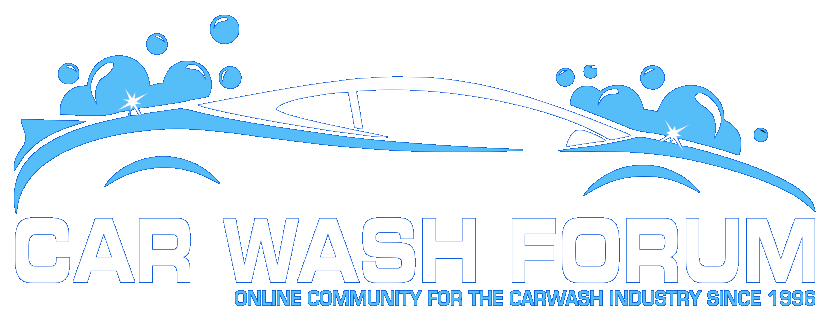There's been issues with the low pressure at our car wash since I bought it.
I finally decided to upgrade the pumps to flojets.
On the original system, the pressure gauges were AFTER the pump. However, when I see new systems for sale, they have the pressure gauge on the air inlet to the pump instead of on the product outflow. It seems to be suggested that way here when I searched about this: http://www.autocareforum.com/showthread.php?16108-Do-I-need-check-valve&p=123963#post123963
Here's how our system looks:
Air Line Splits > FloJet Air Intake
> Air Line Regulator (set to 30 PSI) > Solenoids > Individual Line Outs
Product > FloJet In > FloJet Out > Non-Relieving Pressure Regulator (set to 40 PSI) > Solenoids > Individual Line Outs
(One bay is disconnected because it was replaced by another Auto system)
View attachment 1223
It seems to be working OK, but I am getting blowback out the air pressure relief valve, which burned out a compressor. (If I cover up the relief valves, pressure shoots up to about 45 PSI). Wondering if the issue is pressure gauge on the flojets. I've never been able to really understand how the low pressure systems work, but I was told the product should be at 40 PSI and the air should be at 30 PSI.
When I see new systems online, they all seem to have ONE regulator instead of two, or have a regulator attached to the flojet airline in.
Secondly- if I do switch to regulating the air line to the flojet- should I use relieving or non-relieving?
Thanks for your thoughts.
I finally decided to upgrade the pumps to flojets.
On the original system, the pressure gauges were AFTER the pump. However, when I see new systems for sale, they have the pressure gauge on the air inlet to the pump instead of on the product outflow. It seems to be suggested that way here when I searched about this: http://www.autocareforum.com/showthread.php?16108-Do-I-need-check-valve&p=123963#post123963
Here's how our system looks:
Air Line Splits > FloJet Air Intake
> Air Line Regulator (set to 30 PSI) > Solenoids > Individual Line Outs
Product > FloJet In > FloJet Out > Non-Relieving Pressure Regulator (set to 40 PSI) > Solenoids > Individual Line Outs
(One bay is disconnected because it was replaced by another Auto system)
View attachment 1223
It seems to be working OK, but I am getting blowback out the air pressure relief valve, which burned out a compressor. (If I cover up the relief valves, pressure shoots up to about 45 PSI). Wondering if the issue is pressure gauge on the flojets. I've never been able to really understand how the low pressure systems work, but I was told the product should be at 40 PSI and the air should be at 30 PSI.
When I see new systems online, they all seem to have ONE regulator instead of two, or have a regulator attached to the flojet airline in.
Secondly- if I do switch to regulating the air line to the flojet- should I use relieving or non-relieving?
Thanks for your thoughts.
Last edited:


